How Much Does It Cost to Start Dropshipping? Full Breakdown
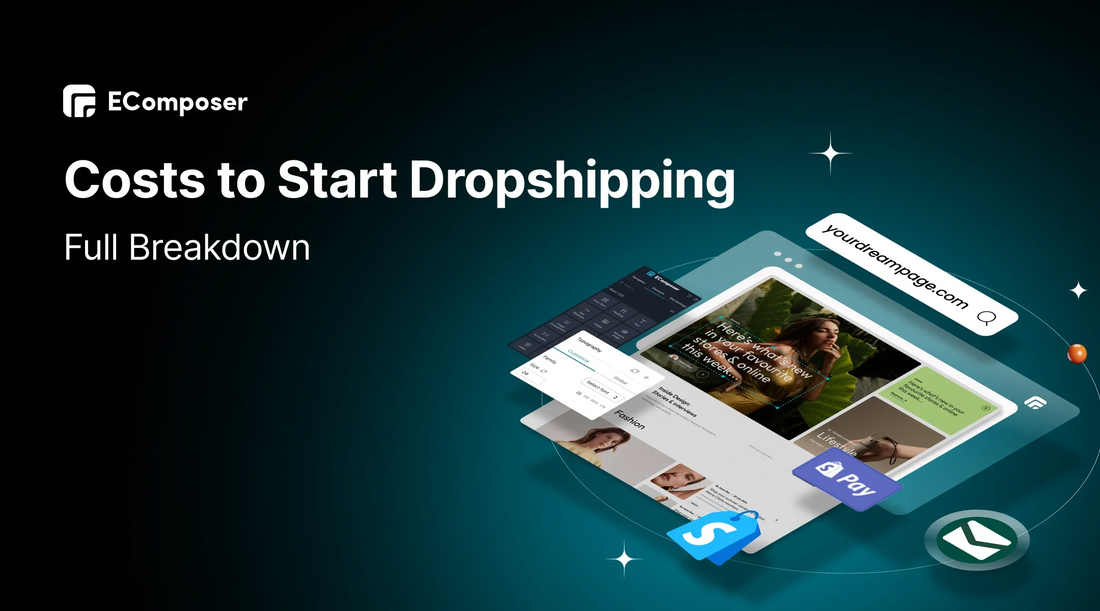
Table Of Contents
Dropshipping enables you to sell goods online without having to worry about inventory or shipping, making it one of the most economical methods to launch an eCommerce company. With low upfront costs and minimal risk, it's an attractive option for aspiring entrepreneurs. However, figuring out the actual cost of starting dropshipping isn't always straightforward—expenses can vary depending on your platform, marketing strategy, and supplier fees.
In "How Much Does It Cost to Start Dropshipping? Full Breakdown," we'll dive into every expense you need to consider. While this business model can be budget-friendly, success depends on smart investments in tools, advertising, and branding. Understanding these costs upfront will help you launch your store with confidence!
Costs to start with Dropshipping
#1. Initial Setup Costs
a. Domain Name

Your domain name is the digital storefront of your business. It's how customers find you online, build trust in your brand, and remember your store's name. A custom .com domain gives your business credibility and improves SEO rankings, making it easier for people to discover your products.
How Much Does a Domain Cost?
- Standard .com domain: $10 – $50 per year (depending on registrar & renewal rates).
- Popular domain registrars:
-
- GoDaddy: Starts at $11.99/year
- Namecheap: Starts at $9.58/year
- Bluehost: Starts at $12.99/year
- Hostinger: Starts at $9.99/year
💡 Pro Tip: Some eCommerce platforms (like Shopify) allow you to buy a domain directly through them, but it may cost more than using a third-party registrar. Always check for hidden renewal fees after the first year to avoid unexpected price hikes.
b. E-Commerce Platform

Once you secure your domain, you'll need a platform to build and manage your store. There are two main options:
E-Commerce Platforms (Best for Branding & Control)
If you want full control over your branding, store design, and customer experience, an eCommerce platform like Shopify, Wix, or WooCommerce is the best choice.
Platform Costs:
-
Shopify wwebsite cost:
- $29/month (Basic plan)
- 2.9% + $0.30 per transaction processing fee
- Lower transaction fees for higher-tier plans
-
Wix:
- $23/month (Basic Business plan)
- Includes hosting & templates
-
WooCommerce (WordPress-based):
- Free to use, but requires hosting (~$5 – $25/month)
Pros of eCommerce Platforms:
- Full control over branding & customization
- No product listing fees
- Better for building a long-term, independent store
Online Marketplaces (Best for Quick Sales & Built-in Traffic)
If you don't want to drive traffic yourself, marketplaces like Etsy, Amazon, and eBay can help you start selling faster. However, these platforms charge listing fees, transaction fees, and processing fees, which can add up.
Marketplace Costs:
-
Etsy:
- $0.20 per product listing
- 6.5% transaction fee per sale
- 3% + $0.25 payment processing fee
-
eBay:
- Insertion fees + 12.9% final value fee per sale
Pros of Online Marketplaces:
- Faster access to potential buyers
- No need to run paid ads
- Easier to set up than a full website
💡 Pro Tip: If you want long-term brand growth, a dedicated eCommerce website is the better option. However, if you're testing a new product or niche, starting on Etsy, eBay or get Shopify for free can help gauge demand before committing to an entire website.
c. Website Design & Development

Building trust and turning visitors into consumers depend heavily on having a store that is both aesthetically pleasing and easy to use. Depending on your budget, you can either use free templates, purchase a premium theme, or hire a web designer.
Website Design Costs:
- Free themes: These are available on Shopify, Wix, and WooCommerce (basic but functional).
- Premium themes: $50 – $300 one-time for a more polished look.
- Freelance web designer: $500 – $3,000+ if you want a fully customized site.
-
Logo & Branding Tools:
- Canva (DIY graphics): Free or $12.99/month (Pro version)
- Fiverr (hire a designer): $10 – $100 for a professional logo.
What's the Best Option?
- If you're on a budget, start with a free theme and upgrade later.
- If you want a professional look, invest in a premium theme or hire a freelancer.
- A high-quality logo and cohesive brand design make a big difference in credibility.
💡 Pro Tip: A well-designed store with fast loading speeds, clear product images, and simple navigation can significantly increase sales. Focus on mobile responsiveness, as most online shoppers browse via smartphones! You can use a page builder app like Ecomposer to make it easy!
Making Your Store Stand Out
A template can get you started, but a truly high-converting store requires more than just a nice design. Details like page speed, user experience, and seamless navigation make all the difference.

That’s where The4's Shopify Development Services come in. Specializing in premium Shopify themes and custom store setups, The4 helps businesses build professional, high-performing online stores that turn visitors into customers.
The goal? A store that doesn’t just look good—but sells.
Read more:
- Top Trending Shopify Website Design Ideas for eCommerce
- 7 Must-have Website Design Elements for a Successful Shopify Store
- Shopify Website Builder Tutorial: How to Create a Website?
🚀 How Much Should You Budget for Web Design & Development?
Your initial setup costs will depend on how professional you want your store to look from the start. Here's a rough estimate based on different approaches:
|
Setup Level |
Estimated Cost |
What’s Included? |
|
Bare Minimum |
$50 – $150 |
Basic domain, free eCommerce platform plan, free theme |
|
Professional Setup |
$500 – $2,000+ |
Premium theme, custom branding, website design |
|
Fully Customized |
$2,000 – $5,000+ |
Custom design, high-end branding, advanced features |
Starting a dropshipping business can be affordable, but smart investments in branding, user experience, and eCommerce tools will give you a competitive edge. A sleek, user-friendly store builds trust and increases conversions—so choose your setup wisely!
#2. Product Sourcing & Supplier Fees
a. Finding Suppliers

Your product's cost, shipping time, and overall customer satisfaction depend on the suppliers you work with. There are three primary methods for sourcing dropshipping products:
✅ Dropshipping Marketplaces & Wholesale Platforms
Dropshipping Platforms like AliExpress, SaleHoo, and Wholesale2B offer millions of products from global suppliers. These marketplaces allow you to source products quickly without upfront inventory costs. However, shipping times can vary, especially if items are sent from overseas.
Estimated Costs:
- AliExpress: Product costs start as low as $1 – $10 per unit, depending on the niche.
- SaleHoo: Requires a $67 annual fee for access to vetted suppliers.
- Wholesale2B: Monthly plans range from $29 – $49/month for supplier integration.
Pro Tip: Always check supplier reviews, product quality, and shipping times before choosing a vendor. Working with reliable suppliers prevents delays, refunds, and bad customer experiences.
🏷 Private Label Products (Brand Your Own Items)
Private labeling allows you to sell customized products under your own brand, making your business more professional and increasing customer loyalty. If you want to stand out from competitors, this is a great option.
Estimated Costs:
- Manufacturer setup fees: $50 – $500 (varies by supplier).
- Minimum order quantity (MOQ): Some suppliers require 12 – 100 units upfront.
- Example: Onoxa offers private-label skincare products for $5 per unit, with a 12-item MOQ.
Pro Tip: Private labeling is best for long-term branding, but it requires more investment upfront. If you're testing the market, start with standard dropshipping before committing to bulk orders.
👕 Print-on-Demand (POD) Products
Print-on-demand (POD) allows you to sell custom-designed apparel, accessories, and home decor without holding inventory. A POD provider prints and sends the goods straight to the consumer when they make an order.
Estimated Costs:
- Product base price: For Example – a POD t-shirt might cost $12, and you sell it for $30, keeping $18 in profit.
- No upfront costs: You only pay when a customer orders.
- Popular POD platforms: Printify, Printful, Teespring.
Pro Tip: POD is great for branding, but profit margins depend on product pricing. Choose a supplier with competitive pricing to maximize earnings.
b. Sample Orders

Before listing a product in your store, ordering a sample is crucial. This helps you:
✔ Verify product quality and avoid selling low-quality items.
✔ Check shipping times to set accurate expectations for customers.
✔ Capture high-quality photos for product listings (instead of using generic supplier images).
Estimated Cost:
- Product samples typically cost $10 – $50 per item, including shipping.
- Some suppliers offer discounted samples or refunds if you place bulk orders later.
Pro Tip: If a supplier refuses to send a sample, it's a red flag. Always test the products yourself before selling them.
c. Supplier Markup & Product Pricing

Dropshipping suppliers markup product prices to cover their costs. As a store owner, you need to factor in these costs when setting prices to ensure profitability.
How Supplier Markups Affect Pricing
- Wholesale prices are typically 30% – 60% lower than retail prices.
- Some dropshipping suppliers charge additional fees per order ($2 – $5 per item).
- Shipping costs may not be included, impacting final pricing.
How to Price Your Products for Profit
To determine your pricing, use this simple formula:
Selling Price = Product Cost + Supplier Fees + Profit Margin
Example:
- You source a product for $10 (including supplier fees).
- You apply a 2.5x markup → Selling price: $25.
- Your profit per sale = $15 (before marketing expenses).
Pro Tip: Higher-priced products generally have lower competition and higher profit margins. Try a variety of pricing tactics to see which suits your niche the best.
d. Taxes & Compliance

Running a legitimate and compliant dropshipping business requires paying taxes. The type and amount of tax you pay depend on where your business operates and where your customers are located.
🏛 Sales Tax (US Businesses)
If you're selling to US customers, you may need to collect and remit sales tax in states where you have nexus (a physical or economic presence).
Sales Tax Rates: Varies by state (generally 4% – 10% per transaction).
Pro Tip: If you sell via Printify, they automatically collect and remit sales tax for US orders. However, you may need to provide a valid resale certificate to avoid unnecessary charges.
🌎 Value-Added Tax (VAT) for International Sales
VAT applies to transactions in over 115 countries, including the EU, UK, and Australia.
VAT Rate: Typically 5% – 27%, depending on the country.
Pro Tip: Many suppliers automatically include VAT in product costs, but always check tax regulations in your country to avoid unexpected expenses.
🏦 Income Tax: Reporting Your Profits
As a business owner, you're responsible for paying income tax on your earnings. The tax rate depends on your country and business structure.
Taxable Income = Revenue - Business Expenses (e.g., product costs, marketing, software).
Pro Tip: Work with a tax specialist or CPA to ensure compliance and maximize deductions.
🚀 How Much Should You Budget for Product Sourcing?
|
Expense Category |
Estimated Cost |
Why It’s Important? |
|
Supplier Memberships |
$0 – $67/year |
Some platforms charge fees for access to verified suppliers. |
|
Sample Orders |
$10 – $50 per item |
Ensures product quality before selling. |
|
Product Costs |
$1 – $50 per unit |
Wholesale pricing varies by niche and supplier. |
|
Supplier Fees |
$2 – $5 per order |
Some suppliers charge additional processing fees. |
|
Private Label Setup |
$50 – $500+ |
Branding and packaging customization. |
|
Taxes (Sales/VAT/Income) |
Varies by location |
Required for business compliance. |
The total product sourcing cost depends on your business model, niche, and supplier fees. Whether you choose wholesale platforms, private labeling, or print-on-demand, investing in quality products and understanding tax requirements will ensure a profitable and legally compliant dropshipping business.
#3. Marketing & Advertising Costs
Setting up your Shopify dropshipping store is just the beginning—the real challenge is getting customers to visit your store and make a purchase. Since dropshipping is a competitive business, investing in marketing is essential to stand out. The good news? There are multiple ways to promote your store, from paid advertising to organic content marketing. Below is a breakdown of the key marketing expenses you should consider.
a. Paid Advertising

Paid adverts are among the most efficient ways to attract potential customers to your store. Facebook, Instagram, TikTok, and other platforms have sophisticated targeting tools that let you connect with the people who are most likely to purchase your goods.
Estimated Costs for Paid Ads:
-
Facebook & Instagram Ads:
- Minimum budget: $5 – $20 per day.
- Suggested budget for new stores: $100 – $200 for initial testing.
- Higher budgets ($500 – $1,000/month) allow for better optimization and scaling.
-
TikTok Ads:
- Recommended starting budget: $50 – $100 for testing.
- If content goes viral, ad costs can drop significantly.
Pro Tip: Start with a small ad spend ($5 – $20/day) to test different audiences and ad creatives. Once you find a winning campaign, gradually increase your budget for better results.
b. Influencer Marketing

Partnering with influencers—especially on Instagram, TikTok, and YouTube—can help your store gain traction quickly. Influencers already have a loyal audience, which makes it easier to build trust and drive traffic to your store.
Estimated Costs for Influencers:
- Nano Influencers (1,000 – 10,000 followers): $100 – $800 per post.
- Micro-Influencers (10,000 – 100,000 followers): $800 – $2,000 per post.
- Mega Influencers (1M+ followers): $7,000+ per post (but with massive reach).
Pro Tip: If you're on a tight budget, gift influencers free products in exchange for a review or shoutout. Without shelling out thousands for marketing, this might be a reasonably priced method of increasing brand recognition.
c. SEO & Content Marketing

It must be done to put money in the areas of SEO and content marketing if you wish to generate steady, free traffic. Unlike paid ads, SEO takes time to show results, but once your store ranks well on Google, you can attract visitors without spending money on ads.
Search Engine Optimization (SEO)
In order for potential customers to find you while looking for related items, SEO helps your store rank higher on search engines.
SEO Tools & Costs:
- Yoast SEO (WordPress) or Plugin SEO (Shopify): $0 – $30/month.
- Advanced SEO tools (Ahrefs, SEMrush, Moz): $15 – $199/month.
Pro Tip: Use free SEO tools like Google Keyword Planner to find high-traffic, low-competition keywords for your product pages and blog.
Content Marketing (Blogging & Social Media)
A well-maintained blog can drive organic traffic and position your brand as an authority in your niche. You may draw in customers who are already interested in your items by providing helpful material and responding to frequently asked queries.
Content Marketing Costs:
- DIY Blogging: Free if you write articles yourself.
- Freelance Writers: $30 – $500 per article, depending on expertise.
- Content Planning Tools (Trello, Airtable): $10 – $25/month.
Pro Tip: If you don't have time to write, consider hiring a freelance content writer on platforms like Fiverr or Upwork.
d. Email Marketing

One of the best return on investment marketing tactics for dropshipping is email marketing. You may boost conversions by sending unique offers, abandoned cart notifications, and promotions to your email list.
Email Marketing Costs:
- Mailchimp, Klaviyo, or ActiveCampaign: $10 – $50/month, depending on list size.
- Automated email flows: Some email tools offer free plans, but premium automation features may require a subscription.
Pro Tip: Collect emails by offering discount codes or free guides in exchange for sign-ups. Automated email sequences can increase repeat purchases and customer loyalty.
e. Affiliate Marketing

Influencers, YouTubers, and bloggers may promote your items through affiliate marketing in return for a commission on each transaction they bring in. You pay when you see results rather than upfront.
Affiliate Marketing Costs:
- Affiliate program setup: $30 – $100/month (Shopify/WordPress plugins).
- Commission per sale: 5% – 30%, depending on the product and niche.
Pro Tip: Affiliate marketing is cost-effective because you only pay for actual sales. Consider setting up an affiliate program on ShareASale, Refersion, or Shopify's Affiliate App.
🚀 How Much Should You Budget for Marketing?
|
Marketing Channel |
Estimated Cost |
Best For |
|
Paid Advertising (Facebook, Instagram, TikTok) |
$5 – $100+/day |
Quick traffic, sales boosts |
|
Influencer Marketing |
$100 – $7,000/post |
Social proof, brand awareness |
|
SEO Tools |
$15 – $199/month |
Long-term organic traffic |
|
Blogging (Content Marketing) |
$30 – $500/article |
Establishing authority, free traffic |
|
Email Marketing |
$10 – $50/month |
Customer retention, repeat sales |
|
Affiliate Marketing |
$30 – $100/month + 5–30% commission |
Performance-based sales growth |
Marketing costs depend on your budget and growth strategy. If you're starting, focus on low-cost marketing like SEO, content creation, and email marketing before scaling with paid ads and influencer partnerships.
#4. Ongoing Operational Costs
Running a dropshipping business isn't just about setting up a store and launching ads—it also requires ongoing operational expenses to ensure smooth transactions, automated processes, and a seamless customer experience. Two major areas that contribute to these costs are payment processing fees and subscription-based tools & apps. Let's break down these recurring expenses so you can budget accordingly.
a. Payment Processing Fees

When a customer purchases your store, payment processors like Shopify Payments, PayPal, Stripe, or Square handle the transaction. However, each provider charges a processing fee for every sale, which impacts your overall profit margin.
Estimated Payment Processing Fees:
- Shopify Payments: 2.9% + $0.30 per transaction (US-based)
- PayPal: 2.9% + $0.30 each transaction, plus up to 4.4% in foreign surcharges
- Stripe: 2.9% + $0.30 per transaction, with an extra 1% for international payments
- Amazon Pay: 2.9% + $0.30 per transaction (US-based), 3.9% for international
- Square: 2.9% + $0.30 for online payments
Pro Tip: International sales often have higher processing fees, so adjust your pricing accordingly to maintain profit margins. Some platforms offer discounted transaction fees on higher-tier plans, so upgrading may save you money in the long run.
b. Subscription for Tools & Apps

To efficiently run a dropshipping business, you'll need various tools and apps to help with product import, inventory management, order fulfillment, customer service, and analytics. Purchasing the appropriate tools may enhance corporate operations, cut down on manual labor, and save time.
Must-Have Dropshipping Tools & Costs
There are hundreds of apps available on platforms like Shopify, WooCommerce, and BigCommerce, ranging from free basic tools to premium subscriptions costing hundreds of dollars per month. Here are the key tools you might need:
Product Import & Inventory Management
These apps help you import products from suppliers, sync inventory levels, and automate order fulfillment.
- AutoDS (Shopify Integration): $19.90 – $49.90/month
- DSers (AliExpress integration): Free plan available, premium plans $19.90 – $49.90/month
- Spocket (US & EU suppliers): $24 – $99/month
Analytics & Store Optimization
Track customer behavior, conversions, and sales trends to optimize your business.
- Google Analytics: Free
- Hotjar (heatmaps & session recordings): $39 – $99/month
Email & Customer Communication
Engage customers with email marketing campaigns and abandoned cart recovery.
- Klaviyo (Email & SMS marketing): $10 – $50/month
- Tidio (Live chat & chatbot): Free plan available, premium $19 – $49/month
Order Fulfillment & Shipping Automation
Reduce manual tasks by automating order processing and shipment tracking.
- ShipStation: $9 – $99/month
- AfterShip (Tracking notifications): Free plan available, premium $9 – $199/month
Pro Tip: Start with essential free or low-cost tools and scale up as your business grows. Some apps offer free trials, so test different tools before committing to a paid subscription.
🚀 How Much Should You Budget for Ongoing Costs?
|
Operating Expense |
Estimated Cost |
Why It’s Important? |
|
Payment Processing Fees |
2.9% – 4.4% per transaction |
Essential for accepting payments |
|
Product Import & Inventory Management Apps |
$0 – $49.90/month |
Automates order syncing & fulfillment |
|
Analytics & Tracking Tools |
$0 – $99/month |
Helps optimize store performance |
|
Email & Customer Communication |
$10 – $50/month |
Increases customer engagement & repeat sales |
|
Order Fulfillment & Shipping Tools |
$9 – $99/month |
Ensures smooth delivery process |
The exact ongoing operational costs depend on the size of your business, the tools you use, and the volume of sales. If you're starting, keep costs minimal by using free or basic plans, then upgrade as your business scales.
#5. Miscellaneous Costs
Beyond the obvious costs like product sourcing and marketing, there are several hidden expenses that new dropshippers often overlook. Shipping & fulfillment, legal compliance, and customer service costs can impact your bottom line and should be factored into your budget. Here's a breakdown of these miscellaneous costs and how they affect your business.
a. Shipping & Fulfillment

Although drop shipping eliminates the need to handle inventory, you still need to account for shipping fees and delivery times. Most suppliers charge separate shipping fees, which can vary based on product weight, destination, and carrier.
Estimated Shipping Costs:
- AliExpress Standard Shipping: $0 – $5 per order (varies by supplier).
- ePacket Shipping (for faster delivery): $2 – $10 per order.
- Private suppliers (US/EU-based): $5 – $20 per order (faster but pricier).
Pro Tip: Offer free shipping by incorporating the cost into your product price. Alternatively, provide express shipping options for customers willing to pay more for faster delivery.
b. Legal & Business Setup Costs

Even though dropshipping is a low-risk business model, you still need to consider legal compliance and business registration. While some entrepreneurs start without formal business registration, setting up a legal entity can provide tax benefits and legal protection.
Legal & Business Setup Costs:
- Business Registration (LLC, Sole Proprietorship): $50 – $400, depending on location.
- EIN (Employer Identification Number) (US businesses): Free (Required for tax & banking).
- Business License & Seller's Permit: $50 – $300, depending on your state/country.
- Privacy Policy & Terms of Service (Legal Templates): $30 – $200 one-time fee or use free templates.
Pro Tip: Consult a business attorney or tax specialist to ensure compliance with your local laws and avoid potential fines.
c. Customer Service & Support

Customer service is one of the most overlooked costs in dropshipping. Since you don't control product quality or shipping, you'll likely deal with refund requests, late deliveries, and product inquiries. Poor customer service can hurt your brand reputation and lead to chargebacks.
Estimated Customer Support Costs:
- Help Desk Software (Live Chat, Support Tickets): Tidio, Zendesk, or Gorgias: $10 – $50/month
-
Virtual Assistant (For Handling Customer Inquiries):
- Freelance VA (Fiverr/Upwork): $3 – $10/hour
- Full-time VA: $200 – $800/month (depending on workload).
Pro Tip: Automate FAQs with a chatbot or email autoresponders to reduce manual support work.
🚀 What Are the Hidden Costs of Dropshipping?
|
Expense Category |
Estimated Cost |
Why It’s Important? |
|
Shipping & Fulfillment |
$0 – $20 per order |
Affects delivery time & customer satisfaction |
|
Business Registration & Legal Fees |
$50 – $400 |
Ensures compliance & protects your business |
|
Customer Service & Support |
$10 – $800/month |
Reduces refunds & improves customer trust |
While these costs may seem small, they add up over time and can impact your profitability. Budgeting for shipping, legal compliance, and customer support ensures your dropshipping store runs smoothly and builds a strong reputation.
#6. Profit Margins & ROI

Understanding your profit margins is crucial for running a successful and sustainable dropshipping business. Despite dropshipping's lower initial costs than traditional retail, variables including product price, supplier fees, and marketing expenditures will affect your profitability. Let's break down how much you can expect to earn, how to calculate your profit margins, and when you can reach the break-even point.
a. Understanding Profit Margins in Dropshipping
Profit margins in dropshipping typically range between 10% and 30%, depending on your niche, product cost, and supplier fees. Higher-priced items often have lower competition and better margins, while trending, low-cost items may require higher sales volume to be profitable.
Average Profit Margins by Niche:
- Low-margin niches (electronics, gadgets): 10% – 15% profit per sale.
- Mid-range niches (fashion, home decor): 20% – 30% profit per sale.
- High-margin niches (beauty, fitness, print-on-demand): 30% – 50%+ profit per sale.
How to Calculate Your Profit Margin:
Use this simple formula to determine how much you're earning per sale:
Profit Margin (%) = [(Selling Price - Product Cost - Fees) ÷ Selling Price] × 100
Example Calculation:
- Selling Price: $50
- Product Cost: $20
- Supplier Fees & Shipping: $5
- Payment Processing Fees (2.9% + $0.30): $1.75
- Ad Spend per Sale: $10
Profit = $50 - ($20 + $5 + $1.75 + $10) = $13.25
Profit Margin = (13.25 ÷ 50) × 100 = 26.5%
🔹 Pro Tip: If your margins are below 15%, consider increasing product pricing, negotiating better supplier rates, or optimizing your marketing costs.
b. Break-Even Point: When Will You Become Profitable?
When your total revenue and entire costs are equal, you have reached the break-even threshold and are no longer losing money. Most dropshippers break even within 3-6 months if they optimize their marketing and operations effectively.
Factors That Affect Your Break-Even Timeline:
- Product Pricing & Margins: Higher-margin products help you reach profitability faster.
- Marketing Efficiency: Lower ad costs = faster break-even.
- Conversion Rate Optimization: A well-designed store improves sales without extra costs.
- Supplier & Shipping Costs: Lower supplier fees = higher profits.
Example Break-Even Scenario:
- Startup Costs (first 3 months): ~$500 – $1,500 (ads, website, apps).
- Average profit per sale: $15 – $25.
- Sales needed to break even: 40 – 100 orders (depending on margin).
🔹 Pro Tip: If you reinvest your early profits into ads and branding, you can scale faster and reach profitability within 3 months instead of 6+.
🚀 How Much Can You Make with Dropshipping?
|
Key Factor |
Estimated Value |
Impact on Profitability |
|
Profit Margin |
10% – 30% |
Higher margins = more profit per sale. |
|
Break-Even Time |
3 – 6 months |
Faster if marketing & pricing are optimized. |
|
ROI (Return on Investment) |
Varies |
A well-run store can generate $5,000 – $50,000+ monthly in revenue. |
Dropshipping can be highly profitable if you strategically manage costs, optimize marketing, and select high-margin products. By focusing on profitability from the start, you can turn your store into a sustainable, revenue-generating business.
How to Minimize Costs

Starting a dropshipping business doesn't have to be expensive. With the right approach, you can reduce upfront costs, optimize spending, and increase profitability. Here's how:
Start Small: Launch with a Minimal Viable Product (MVP)
Instead of adding hundreds of products, start with a small selection of high-potential items. This lowers ad spend, simplifies store management, and helps you test demand before scaling.
Cost-Saving Benefits:
- Lower marketing costs by focusing on a few best-selling products.
- Faster validation—quickly see what sells and what doesn't.
- Easier inventory & order management.
Pro Tip: Use Printify or Printful for print-on-demand products to test designs without upfront inventory costs.
Focus on Organic Traffic: Reduce Paid Ad Dependence
Paid ads bring quick traffic but can be expensive. Using free marketing strategies like SEO, content creation, and social media can drive consistent traffic without high costs.
Cost-Saving Strategies:
- SEO Optimization: Rank higher on Google with keyword-rich product descriptions.
- Content Marketing: Write blog posts, create Pinterest pins, and upload TikTok videos to attract organic visitors.
- Social Media Growth: Engage on Instagram, Facebook, and YouTube without spending on ads.
🔹 Pro Tip: Many Shopify stores use TikTok & Pinterest for free viral marketing—great for brand exposure without ad costs.
Negotiate with Suppliers: Lower Product & Shipping Costs
Suppliers often offer better rates, discounts, or free shipping if you build a strong relationship with them.
Ways to Reduce Supplier Costs:
- Ask for bulk pricing discounts if your store starts generating consistent sales.
- Negotiate lower shipping fees to improve your margins.
- Compare prices from several vendors to get the best offer.
🔹 Pro Tip: Order samples before committing to a supplier and ask for exclusive discounts as a long-term partner.
FAQs
How much money do you need to start dropshipping?
Starting a dropshipping business typically costs $100 to $500, covering a domain, eCommerce platform, and marketing. If you use paid ads, your budget may need to be $1,000+. Keeping costs low by using free themes and organic marketing can help you start with minimal investment.
Can I start dropshipping with no money?
It's possible but challenging. Free trials on Shopify, WooCommerce, or Etsy let you start without upfront costs and organic traffic from SEO and social media can replace ads. However, you'll still need to cover transaction fees and supplier costs, so having a small budget is recommended.
How much can I realistically make with dropshipping in the first year?
Earnings vary based on niche, pricing, and marketing. Many break even in the first three months, then earn $500 – $2,000/month within six months. With effective scaling, it's possible to reach $5,000 – $10,000+/month by the end of the first year.
Conclusion
Starting a dropshipping business is affordable and low-risk, with initial costs typically ranging from $100 to $500, depending on your platform, product sourcing, and marketing strategy. While free tools and organic traffic can help reduce expenses, investing in paid ads, automation tools, and quality suppliers will improve your chances of long-term success.
Though dropshipping requires careful planning and ongoing investment, it offers high scalability and profit potential. Success depends on balancing costs with smart strategies, so weigh your startup expenses against expected profits before diving in. With the right approach, dropshipping can be a profitable and sustainable business.


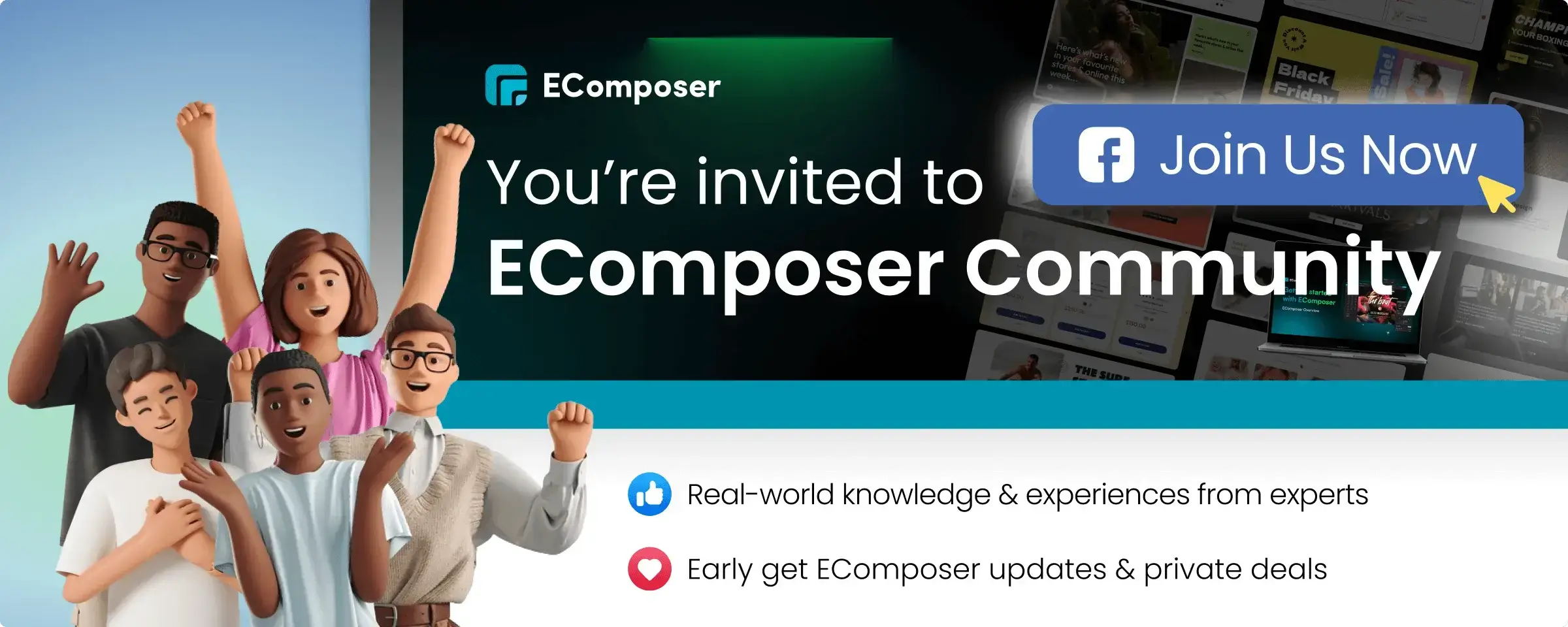






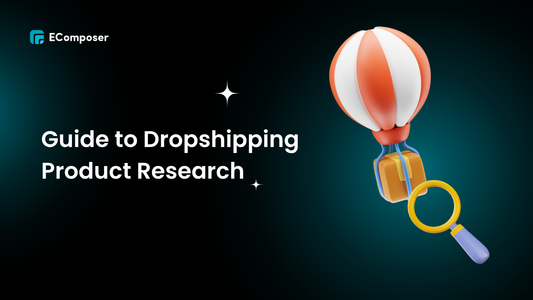
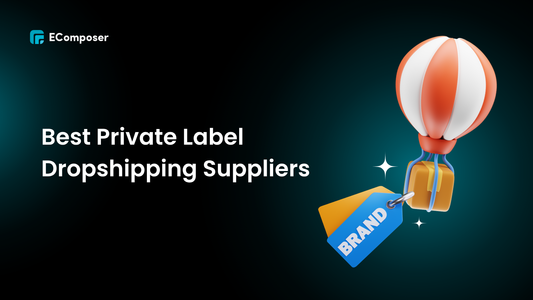
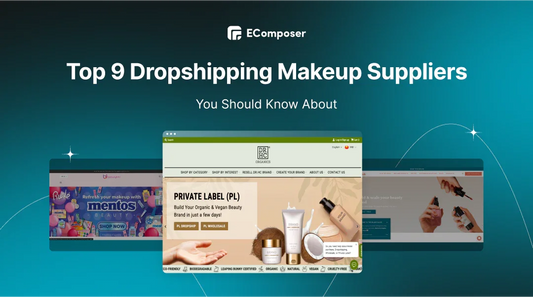

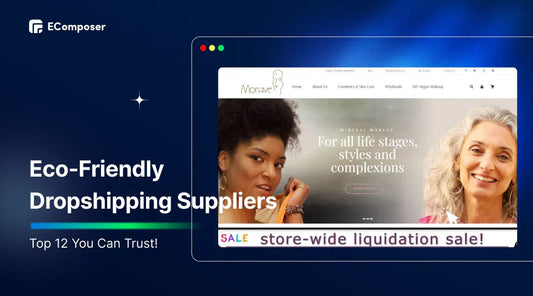







0 comments